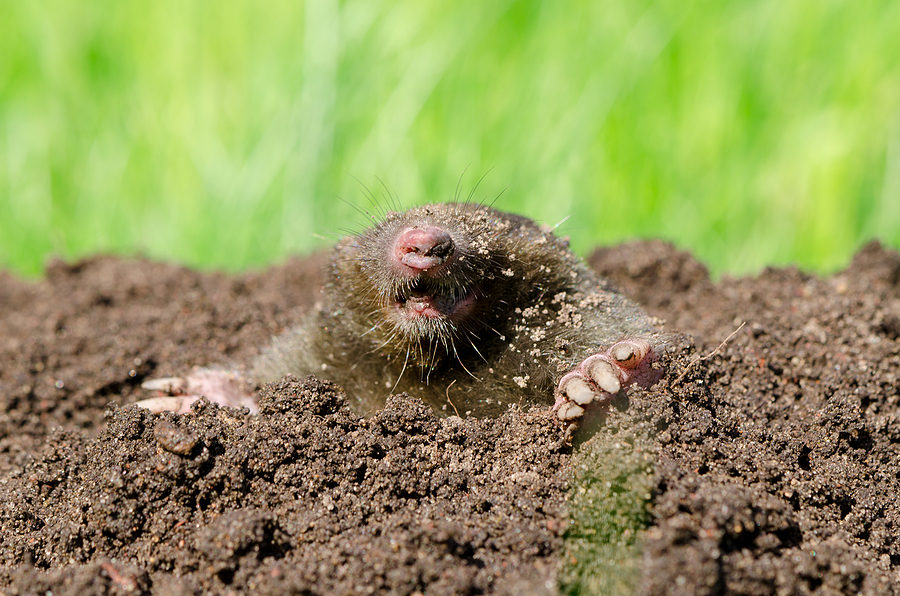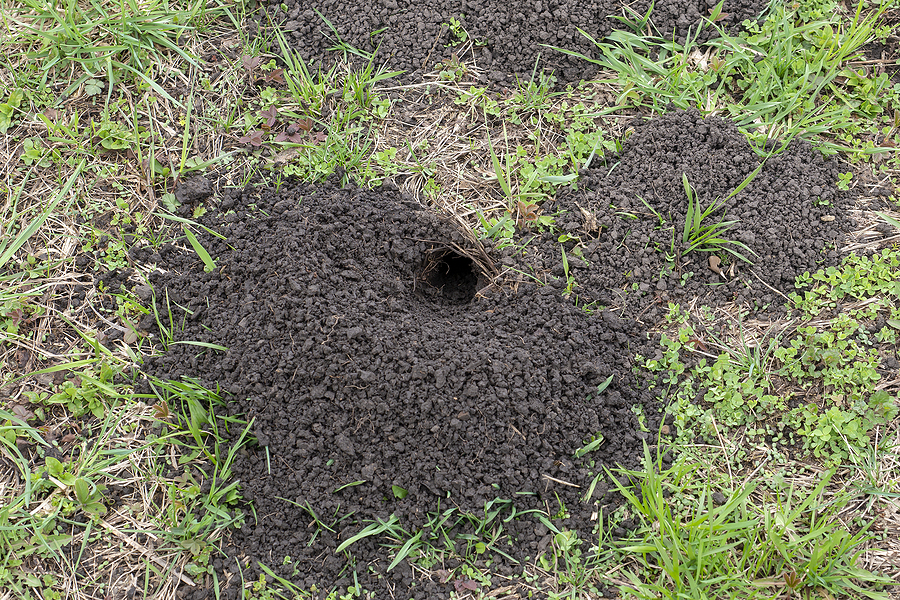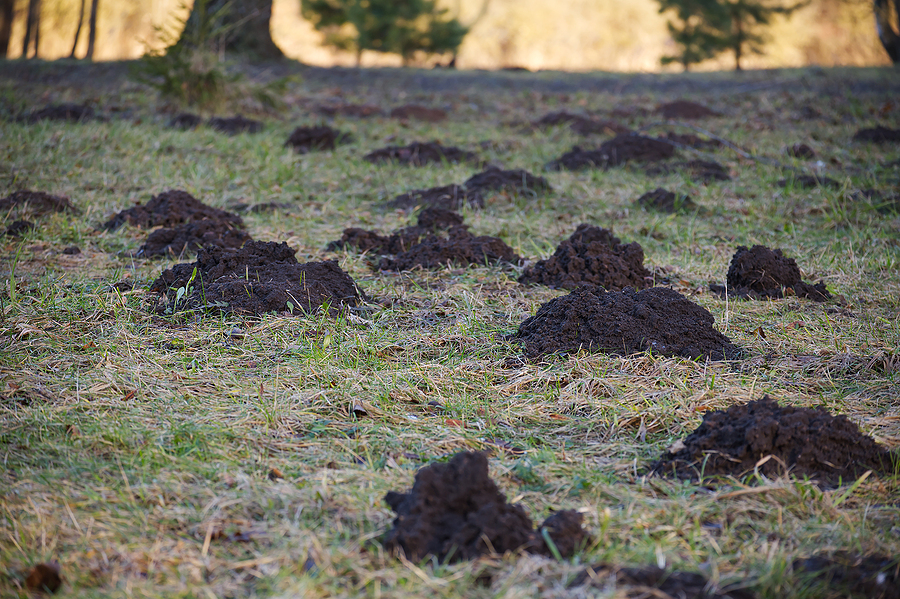Discovering raised ridges and small mounds of dirt scattered across your pristine lawn can be frustrating. Ground moles, those elusive subterranean creatures, have likely taken up residence in your yard, creating unsightly molehills and damaging your carefully maintained landscape. While these small mammals play an important role in the ecosystem by aerating soil and controlling insect populations, their tunneling activities can wreak havoc on lawns, gardens, and landscaping investments.
Understanding how to effectively manage a mole infestation requires more than just wishful thinking or random attempts at removal. Ground mole removal demands strategic planning, proper timing, and the right combination of methods tailored to your specific situation. Whether you’re dealing with a few scattered molehills or an extensive network of mole tunnels, this comprehensive guide will equip you with the knowledge and tools necessary to reclaim your outdoor space.
The key to successful mole control lies in understanding these creatures’ behavior, identifying active tunnels, and implementing targeted removal strategies that address the root cause of the problem. By combining immediate lawn mole removal techniques with long-term prevention strategies, you can restore your lawn’s beauty while maintaining a healthy ecosystem in your yard.

Understanding Ground Moles
Ground moles are small, insectivorous mammals perfectly adapted for underground living. These creatures typically measure 6-8 inches in length and possess powerful front claws designed for digging through soil. Their cylindrical bodies, velvety fur, and tiny eyes reflect their specialized lifestyle beneath the surface.
Moles spend nearly their entire lives underground, creating extensive tunnel systems that can span several acres. These tunnels serve multiple purposes: hunting grounds for finding food, protection from predators, and nesting areas for raising young. Their diet consists primarily of earthworms, grubs, and other soil-dwelling insects, consuming up to 80% of their body weight daily.
Signs of Mole Activity
Identifying signs of a mole infestation is crucial for effective ground mole removal. The most obvious indicators include raised ridges across your lawn where shallow tunnels run just beneath the surface, small mounds of excavated soil called molehills, and soft or spongy areas in your grass where tunnel systems have compromised the soil structure. Fresh molehills with dark, moist soil indicate recent activity, while older mounds will appear weathered and may have vegetation growing on them.
Understanding mole behavior patterns helps optimize removal efforts. Moles are most active during spring and fall when soil moisture levels are ideal for hunting. They typically follow consistent routes through their tunnel networks, making them predictable targets for trapping and other removal methods.
Effective Ground Mole Removal Methods
Trapping: The Most Reliable Approach
Trapping remains the most effective method for ground mole removal, offering immediate results when executed properly. Several trap types are available, each designed for specific situations and tunnel configurations.
- Scissor-jaws traps work by crushing moles as they travel through their tunnels. These traps require precise placement in active main runways—typically the deeper tunnels that connect surface runs.
- Harpoon traps penetrate the tunnel when triggered by mole movement, offering another effective option for ground mole removal. These traps work best in straight sections of active tunnels where moles travel regularly.
When setting traps, wear gloves to avoid transferring human scent, which can deter moles from entering the area. Rub traps with soil from the immediate area to mask any remaining odors. Position traps according to manufacturer instructions, ensuring they’re properly anchored and aligned with tunnel direction.
Timing trap placement strategically improves success rates. Spring thaw and periods following heavy rains represent peak mole activity times, especially in Midwest regions where ground conditions fluctuate significantly. Monitor traps daily and relocate them if no activity occurs within 48-72 hours.
Repellents: Natural and Chemical Options
Mole repellents offer an alternative approach to ground mole removal, though results can vary based on soil conditions, weather patterns, and mole population density. Natural repellents typically use castor oil as their active ingredient, creating an unpleasant taste and smell that discourages mole activity.
Repellent application requires consistency for optimal results. Reapply products after rain or irrigation to maintain efficacy, and ensure even coverage to prevent moles from simply moving to untreated areas. Some homeowners find success rotating between different repellent types to prevent moles from becoming accustomed to specific formulations.
Professional Wildlife Control Services
Professional wildlife removal services offer expertise and specialized equipment for challenging mole infestations. These services become particularly valuable when dealing with extensive tunnel systems, recurring infestations, or situations where DIY methods have proven ineffective.
Professional wildlife control specialists possess the knowledge to identify mole species, assess infestation severity, and implement comprehensive removal strategies. They understand local regulations regarding trapping and chemical use, ensuring compliance with municipal guidelines while protecting non-target wildlife species.
Consider professional ground mole removal services when mole activity continues despite consistent DIY efforts, when mole damage threatens valuable landscaping or structural integrity, or when local regulations restrict certain removal methods. Professional wildlife control often provide warranties or follow-up treatments, offering peace of mind and long-term solutions.
Contact Us for Expert Wildlife Removal Service! ✅
Preventive Measures to Abate Nuisance Moles
Landscaping Strategies
Effective mole control extends beyond removal to include landscape modifications that make your property less attractive to these underground dwellers. Proper soil management forms the foundation of successful mole prevention.
- Improve soil drainage through regular aeration to reduce the moist conditions that attract earthworms and grubs—primary food sources for moles. Well-drained soil also makes tunneling more difficult, encouraging moles to seek easier hunting grounds elsewhere.
- Trim ground cover and dense vegetation that provides mole habitat and conceals tunnel entrances. Maintaining open sight lines improves your ability to monitor mole activity and implement removal strategies when necessary.
- Consider installing underground barriers around valuable garden areas or landscaped beds. Hardware cloth or similar materials buried 12-18 inches deep can prevent mole intrusion while allowing proper drainage and root development.
Lawn Maintenance for Mole Control
Maintaining a healthy lawn creates conditions less favorable for mole activity while preserving the aesthetic and functional value of your outdoor space.
- Avoid overwatering, as consistently moist soil attracts earthworms and grubs that serve as mole food sources.
- Implement proper fertilization and pest control programs that maintain grass health without creating excessive grub populations. Address grub infestations promptly when they occur, but avoid preventive treatments unless grub problems are documented in your specific area.
- Regular lawn inspection allows early detection of mole activity, enabling prompt intervention before extensive tunnel systems develop. Check for raised ridges, soft spots, and fresh molehills during routine lawn maintenance activities.
Common Mistakes to Avoid
Understanding common ground mole removal mistakes helps ensure your efforts succeed while avoiding wasted time and resources.
❌ Improper trap placement ranks as the most frequent error—traps must be positioned in active tunnels, not old or collapsed pathways. Identify main runways by probing the ground gently and setting traps directly in these active travel routes.
❌ Inadequate scent masking can render even properly placed traps ineffective. Moles possess keen olfactory abilities and will avoid areas with human scent contamination. Always wear gloves when handling traps and rub them with local soil to eliminate foreign odors.
❌ Inconsistent repellent application leads to disappointing results. Follow manufacturer instructions precisely, apply products evenly across target areas, and maintain regular reapplication schedules. Spotty coverage simply encourages moles to work around treated zones rather than abandoning the area entirely.
❌ Ignoring seasonal activity patterns reduces removal effectiveness. Focus intensive removal efforts during spring and fall when moles are most active, rather than attempting year-round control programs that may prove less efficient.
Take Action Today
Ground mole removal requires patience, persistence, and the right combination of strategies tailored to your specific situation. Success depends on understanding mole behavior, identifying active tunnel systems, and implementing targeted removal methods at optimal times.
Remember that effective mole control often requires multiple approaches working together. Combine immediate removal techniques like trapping with long-term prevention strategies such as improved drainage and landscape modification. Monitor results carefully and adjust methods based on observed mole activity patterns.
Before implementing any removal program, check with local authorities regarding regulations on trapping methods and chemical repellent use. Some municipalities maintain specific guidelines for wildlife control that must be followed to protect both target and non-target species.
Don’t let mole damage compromise your property’s beauty and value any longer. Contact Us for Expert Help with your ground mole removal needs in Indianapolis. Our professional wildlife control specialists possess the knowledge, experience, and specialized equipment necessary to eliminate mole infestations safely and effectively while protecting your landscape investment for years to come.
Related Post: How to Get Rid of Lawn Moles and Protect Your Garden


